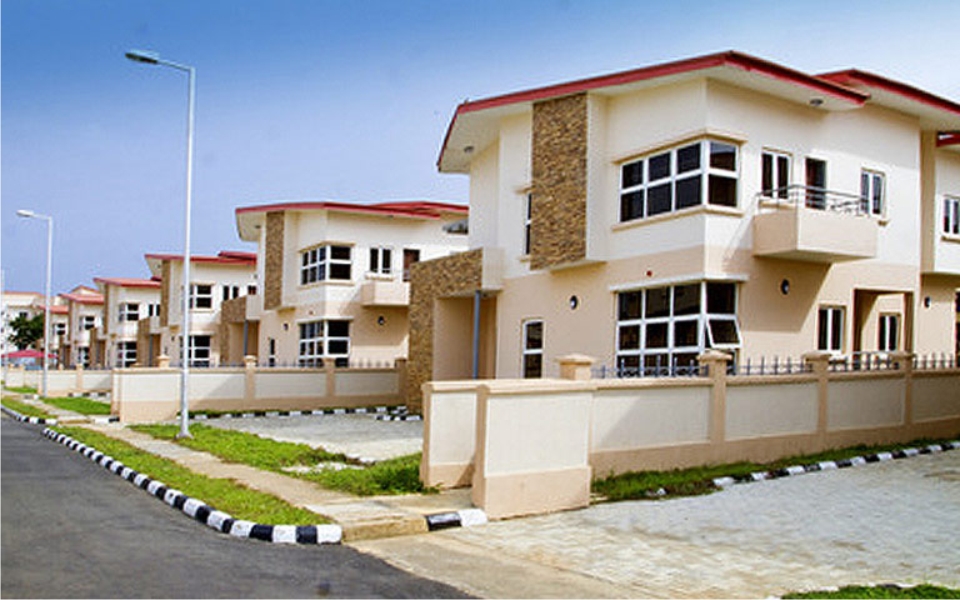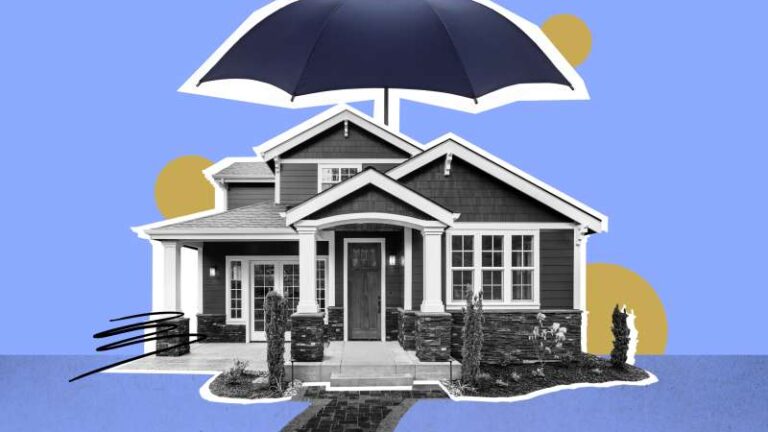Types of Homeowners Insurance
Types of Homeowners Insurance is a crucial safeguard for anyone owning a home. It provides financial protection against a variety of risks, including damage to the property and its contents, as well as liability coverage for accidents that might occur on the premises. Understanding the different types of homeowners insurance policies available is essential for choosing the right coverage for your needs. This comprehensive guide will explore the various types of homeowners insurance, their coverages, benefits, and limitations.
Basic Form (HO-1)
Overview
The Basic Form, also known as HO-1, is the most straightforward and limited form of homeowners insurance. It provides coverage against a specific list of perils.
Covered Perils
HO-1 typically covers the following perils:
- Fire or lightning
- Windstorm or hail
- Explosion
- Riot or civil commotion
- Damage caused by aircraft
- Damage caused by vehicles
- Smoke
- Vandalism or malicious mischief
- Theft
- Volcanic eruption
Coverage Details
- Dwelling Coverage: Provides protection for the structure of your home against the listed perils.
- Personal Property: Coverage for personal belongings within the home, but often at a limited scope and lower limits.
Limitations
HO-1 policies are rare due to their limited coverage. They do not typically cover:
- Liability protection
- Medical payments to others
- Additional living expenses in the event of displacement
Best For
HO-1 is best suited for homeowners looking for minimal coverage at a lower cost, although its limited protection makes it less common and often inadequate for most homeowners.
Broad Form (HO-2) in Types of Homeowners Insurance
Overview
The Broad Form, or HO-2, expands on the coverage provided by HO-1, offering protection against a more extensive list of perils.
Covered Perils
In addition to the perils covered under HO-1, HO-2 typically includes:
- Falling objects
- Weight of ice, snow, or sleet
- Accidental discharge or overflow of water or steam
- Sudden and accidental tearing apart, cracking, burning, or bulging
- Freezing
- Sudden and accidental damage from artificially generated electrical current
Coverage Details
- Dwelling Coverage: More comprehensive protection for the structure of your home.
- Personal Property: Broader coverage for personal belongings.
Limitations
While HO-2 offers broader protection than HO-1, it still operates on a named-peril basis, meaning only those perils specifically listed in the policy are covered.
Best For
HO-2 is ideal for homeowners who want more comprehensive coverage than HO-1 but at a lower cost than more extensive policies like HO-3. It’s a good middle-ground option.
Special Form (HO-3) in Types of Homeowners Insurance
Overview
The Special Form, or HO-3, is the most common type of homeowners insurance policy. It provides comprehensive coverage for the dwelling on an open-peril basis, meaning it covers all perils except those explicitly excluded.
Covered Perils
HO-3 covers all perils except those specifically excluded in the policy, which often includes:
- Flooding
- Earthquakes
- War
- Nuclear accidents
- Wear and tear
- Mold
- Government action
Coverage Details
- Dwelling Coverage: Open-peril coverage for the structure, providing broad protection.
- Personal Property: Named-peril coverage, typically similar to the perils listed in HO-2.
- Liability Coverage: Protection against legal responsibility for injuries or property damage to others.
- Medical Payments: Coverage for medical expenses if someone is injured on your property.
- Additional Living Expenses: Coverage for temporary housing and related costs if your home becomes uninhabitable due to a covered peril.
Limitations
While HO-3 offers extensive coverage, it may require additional riders or endorsements for full protection against specific perils like flooding or earthquakes.
Best For
HO-3 is suitable for most homeowners due to its broad coverage and balance between protection and cost. It’s the standard choice for comprehensive homeowners insurance.
Comprehensive Form (HO-5)
Overview
The Comprehensive Form, or HO-5, is the most inclusive and highest-level standard homeowners insurance policy. It provides open-peril coverage for both the dwelling and personal property.
Covered Perils
HO-5 offers open-peril coverage, meaning all perils are covered unless explicitly excluded. This provides the widest scope of protection available in standard policies.
Coverage Details
- Dwelling Coverage: Open-peril protection for the structure of your home.
- Personal Property: Open-peril coverage, providing comprehensive protection for personal belongings.
- Liability Coverage: Extensive protection against legal responsibilities.
- Medical Payments: Coverage for medical costs if someone is injured on your property.
- Additional Living Expenses: Costs for temporary housing and related expenses if your home is uninhabitable.
Limitations
HO-5 is generally more expensive due to its broad coverage, and may still exclude certain perils like flooding or earthquakes, which require separate policies or endorsements.
Best For
HO-5 is ideal for homeowners seeking the most comprehensive coverage available and willing to pay a higher premium for maximum protection.
Modified Coverage Form (HO-8) in Types of Homeowners Insurance
Overview
The Modified Coverage Form, or HO-8, is designed for older homes where the cost to replace the home exceeds its market value.
Covered Perils
HO-8 typically covers similar perils to HO-1 but may include some additional protections:
- Fire or lightning
- Windstorm or hail
- Explosion
- Riot or civil commotion
- Damage caused by aircraft
- Damage caused by vehicles
- Smoke
- Vandalism or malicious mischief
- Theft
- Volcanic eruption
Coverage Details
- Dwelling Coverage: Based on actual cash value (ACV) rather than replacement cost, which accounts for depreciation.
- Personal Property: Coverage for personal belongings, often at ACV.
- Liability Coverage: Basic protection against legal responsibilities.
- Medical Payments: Coverage for medical expenses if someone is injured on your property.
- Additional Living Expenses: Coverage for temporary housing if the home is uninhabitable.
Limitations
HO-8 offers limited coverage compared to other forms, and the actual cash value basis may result in lower payouts for claims.
Best For
HO-8 is suited for owners of older homes where replacement cost coverage is not feasible due to the high cost of rebuilding with original materials.
Renters Insurance (HO-4) in Types of Homeowners Insurance
Overview
Renters insurance, or HO-4, is designed for individuals who rent their homes. It covers personal property and liability, but not the structure itself.
Covered Perils
HO-4 typically covers a similar list of named perils as HO-2:
- Fire or lightning
- Windstorm or hail
- Explosion
- Riot or civil commotion
- Damage caused by aircraft
- Damage caused by vehicles
- Smoke
- Vandalism or malicious mischief
- Theft
- Falling objects
- Weight of ice, snow, or sleet
- Accidental discharge or overflow of water or steam
- Sudden and accidental tearing apart, cracking, burning, or bulging
- Freezing
- Sudden and accidental damage from artificially generated electrical current
- Volcanic eruption
Coverage Details
- Personal Property: Coverage for personal belongings against named perils.
- Liability Coverage: Protection against legal responsibility for injuries or property damage to others.
- Medical Payments: Coverage for medical expenses if someone is injured in the rented property.
- Additional Living Expenses: Coverage for temporary housing if the rented property becomes uninhabitable due to a covered peril.
Limitations
HO-4 does not cover the structure of the rented property, as this is the landlord’s responsibility.
Best For
HO-4 is perfect for renters who want to protect their personal belongings and have liability coverage.
Condominium Insurance (HO-6) in Types of Homeowners Insurance
Overview
Condominium insurance, or HO-6, is tailored for condo owners. It provides coverage for personal property, liability, and portions of the structure that are the owner’s responsibility.
Covered Perils
HO-6 typically covers the same named perils as HO-2 and HO-4.
Coverage Details
- Dwelling Coverage: Protection for interior walls, floors, and ceilings, as well as improvements and upgrades made to the unit.
- Personal Property: Coverage for personal belongings against named perils.
- Liability Coverage: Protection against legal responsibilities.
- Medical Payments: Coverage for medical expenses if someone is injured in the condo.
- Additional Living Expenses: Costs for temporary housing if the condo becomes uninhabitable due to a covered peril.
Limitations
HO-6 does not cover the building structure, which is usually the responsibility of the condo association’s master policy.
Best For
HO-6 is ideal for condo owners looking to protect their personal property, interior improvements, and liability.
Mobile Home Insurance in Types of Homeowners Insurance
Overview
Mobile home insurance is designed specifically for mobile or manufactured homes, providing coverage for the structure, personal property, and liability.
Covered Perils
Mobile home insurance typically covers perils similar to those in HO-3, but tailored to the unique risks associated with mobile homes.
Coverage Details
- Dwelling Coverage: Protection for the structure of the mobile home.
- Personal Property: Coverage for personal belongings within the mobile home.
- Liability Coverage: Protection against legal responsibilities.
- Medical Payments: Coverage for medical expenses if someone is injured on the property.
- Additional Living Expenses: Costs for temporary housing if the mobile home becomes uninhabitable.
Limitations
Coverage specifics and limits may vary based on the insurer and policy options chosen.
Best For
Mobile home insurance is ideal for owners of mobile or manufactured homes, offering tailored protection for their unique housing situation.
Additional Considerations and Endorsements in Types of Homeowners Insurance
Flood Insurance
Standard homeowners insurance policies do not cover flood damage. Homeowners in flood-prone areas should consider purchasing a separate flood insurance policy through the National Flood Insurance Program (NFIP) or private insurers.
Earthquake Insurance
Most standard policies exclude earthquake damage. In earthquake-prone regions, homeowners should look into a separate earthquake insurance policy to ensure they are protected against this risk.
Umbrella Insurance
An umbrella policy provides additional liability coverage beyond the limits of your standard homeowners policy. It’s useful for those who want extra protection against significant liability claims.
Scheduled Personal Property
For high-value items such as jewelry, art, or collectibles, a scheduled personal property endorsement provides additional coverage beyond the standard policy limits.
Identity Theft Protection
Some insurers offer endorsements that provide coverage and assistance if your identity is stolen, helping to manage and recover from the incident.
Sewer Backup
Coverage for damage caused by sewer backups is typically not included in standard policies but can be added through an endorsement.
Home Business Endorsement
If you run a business from your home, you might need an endorsement to cover business equipment and liability related to your business activities.
Choosing the Right Policy in Types of Homeowners Insurance
Assessing Your Needs
- Dwelling Coverage: Ensure it reflects the cost to rebuild your home, not its market value.
- Personal Property: Conduct a home inventory to determine the value of your belongings.
- Liability Coverage: Consider your risk exposure and assets to protect.
- Additional Living Expenses: Ensure adequate coverage to maintain your standard of living if displaced.
Comparing Policies
- Coverage Limits: Ensure the policy limits meet your needs.
- Deductibles: Higher deductibles can lower premiums, but ensure you can afford the out-of-pocket expense.
- Exclusions: Understand what is not covered and consider additional policies or endorsements for those risks.
Working with an Agent
A knowledgeable insurance agent can help you navigate the complexities of homeowners insurance, comparing different policies and endorsements to find the best fit for your situation.
Conclusion on Types of Homeowners Insurance
Homeowners insurance is not one-size-fits-all. Understanding the different types of policies and their specific coverages is crucial for protecting your home and assets. From the basic HO-1 to the comprehensive HO-5, and specialized forms like HO-4 and HO-6, each policy type serves different needs and circumstances. Evaluating your specific requirements, understanding the risks you face, and choosing the right coverage will ensure you have the financial protection you need to safeguard your home and lifestyle.








